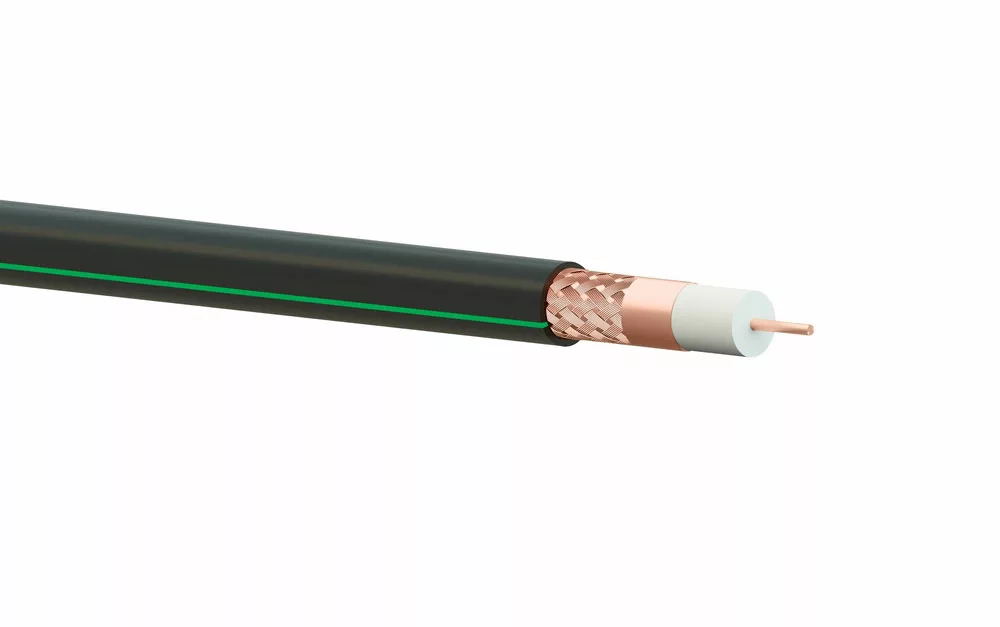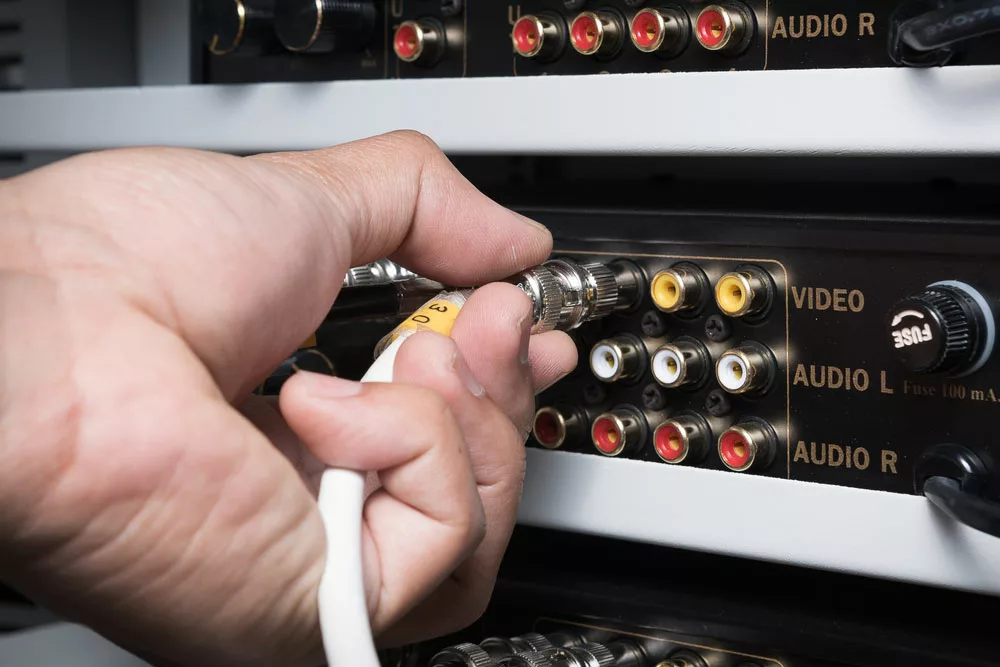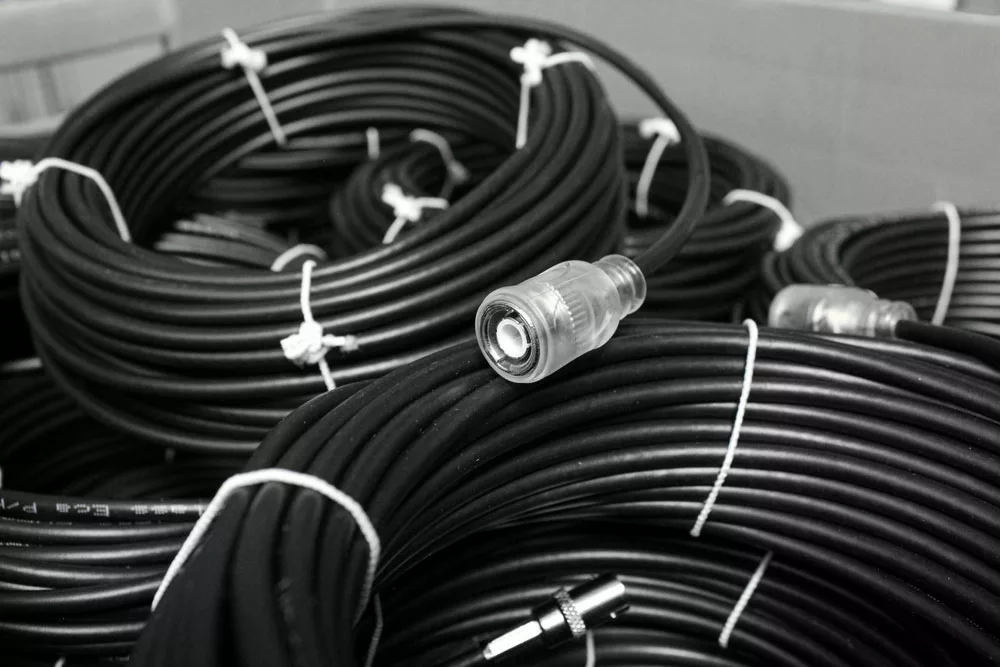You may wonder which cable to use between RG 59 and RG 58 coaxial cable for your wiring processes. We guide you on the difference between these coax cables and how to choose between them.
Coaxial cables have been used for over 100 years and are still a great option when you need a high-frequency transmission cable for your TV or commercial radio.
The cables fall into one of the two categories, LMR and RG ( Radio Guide).
RG cables are still the most common and come in either solid or stranded versions. However, most types of RG cables are solid, with only RG58 and Rg8 available as stranded.
Table of Contents
- What is RG58 Cable Used For?
- What is the Difference Between RG-59 and RG58?
- RG58 Coaxial Cable – FAQs
- RG58 vs RG59: How to Choose
What is RG58 Cable Used For?
We use RG58 for low-power signal and radio frequency (RF) connections. It has a wide range of applications, including:
- A mature radio, transceiver as well, as other mobile installation
- Generic carrier of signals in scientific labs along with BNC connectors common in test and measurement equipment.
- Used as TV cable mostly for antennas but sometimes for CATV and CCTV.
- Though no longer common, it was once widely used in “thin” Ethernet (10BASE2) – the version RG-58A/U or RG-58C/U, specifically.
What is the Difference Between RG-59 and RG58?
RG58 and RG59 have more similarities than they are differences. The only difference is in their impedance, size, and some preferred applications.

Solid RG59 coaxial cable
Impedance
The impedance of these cables is the main difference. RG58 has an impedance of either 50 or 52Ω. 50Ω is great at boosting and carrying the signal efficiently.
For that reason, it guarantees high sound quality and is ideal for speakers.
RG59, on the other hand, has 75 Ohm. This is a standard impedance for coax cable, and it is more effective than 50 Ω at higher frequencies.
Application
We use RG58 and RG59 for low-frequency, power, and bandwidth applications. Though they have similar applications, the difference in characteristic impedance makes them have distinct preferred use.
For instance, RG58 is a better option for radio applications and ethernet networks, while RG59 is a great coax cable for CCTV and cable TV.
Manufacturers designed most two-way radio communication systems, such as amateur, CB radio, WLAN, antennas, police, and fire, to work with a 50 Ω cable.
On the other hand, you can use RG59 at baseband video frequencies. It can also be a cheaper alternative to RG6 or RG11 in broadcast frequencies, especially where the transmission distance is not too long.

RG59 is great for video applications
Diameter
The number on RG formerly stands for the diameter of the cable. RG58 originally had a diameter of .058″, while RG59 had .059″.
However, this may be different now, as the measurements have changed. For instance, the RG58 has a nominal outside diameter of around 5mm, while RG59BU has a nominal outer diameter of 6.15mm.
Other Specifications
Another difference is the size and capacitance displayed. RG58 has a size of 20 AWG and displays a capacitance of 25Pf/ft, and can stand a maximum of 3000 V ( 1800W).
On the other hand, RG59 is even smaller at 22 AWG and has a capacitance of around 20pF/ft (60pF/m).

RG58 coaxial cable
RG58 Coaxial Cable – FAQs
What Cable is Equivalent to RG58?
All LMR cables (with only one exception) are 50 ohms and can be said to be equivalent to RG58. Manufacturers designed LMR-195 to replace RG58 specifically.
However, LRM can be a better alternative due to its superior thickness, greatly reducing signal loss.
What is the Difference Between RG58 and RG 58a?
The plain RG 58 coaxial cable contains a solid center conductor, while the RG-58 AU has a flexible 7-or-19 strand center conductor.
Can You Use a 75-ohm Cable with Radio Equipment?
You can use RG59 or RG6 75 ohm with radio equipment. A dipole has a feed point impedance of around 75 Ω.
That said, you have to ensure the impedance seen by your radio is within your radio’s specification. Or you can use a matching network or a tuner.
RG58 vs RG59: How to Choose
When choosing a cable, ensure it suits the impedance and load of your application’s source. For instance, radio applications, including Ham, usually use 50 Ω, and RG58 is ideal. Video applications and CATV conventionally use 75 Ω, and RG59 is ideal.
The quality of a particular cable also matters a lot and may vary mostly depending on the manufacturer.
Choose high-quality cables from well-known manufacturers; low-quality cables from unknown companies usually have higher losses. Ensure you find a manufacturing datasheet to get an accurate number on loss.
